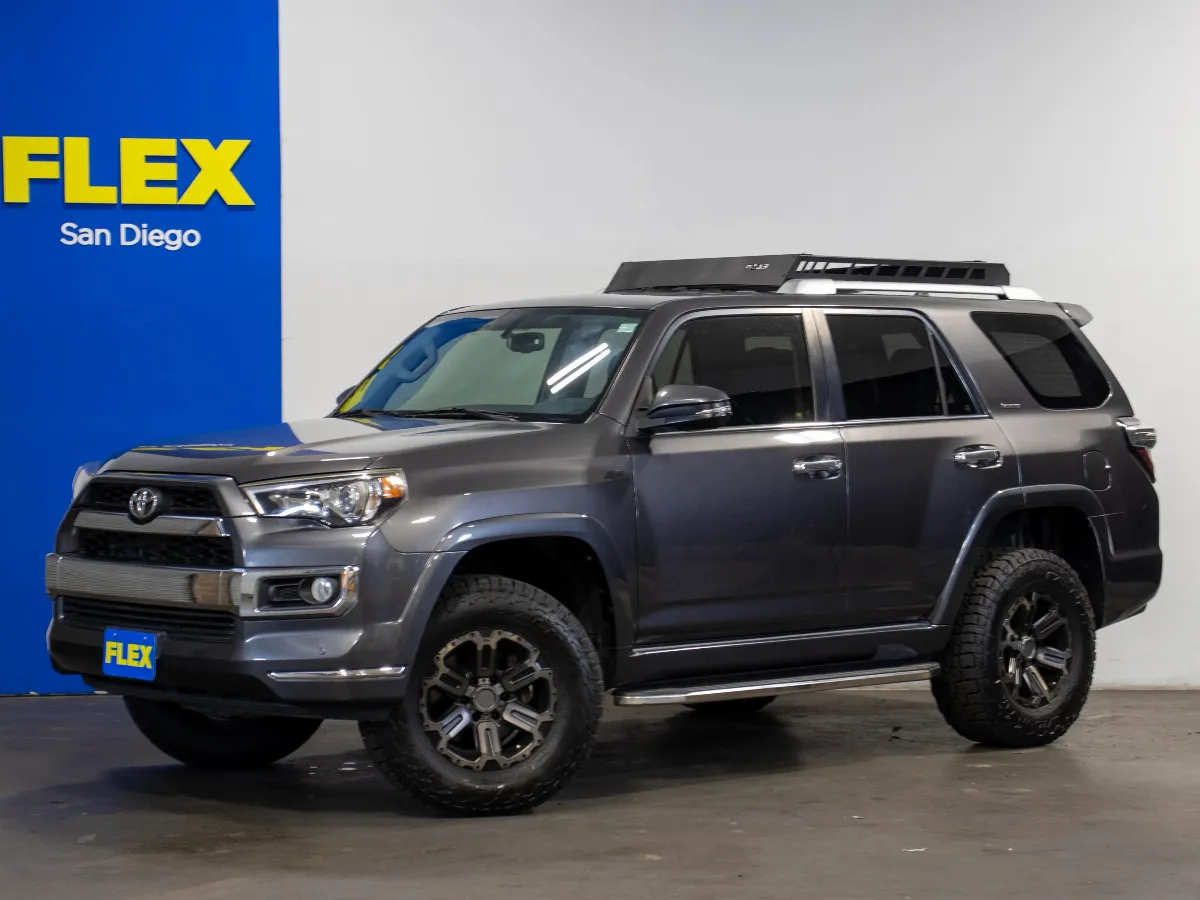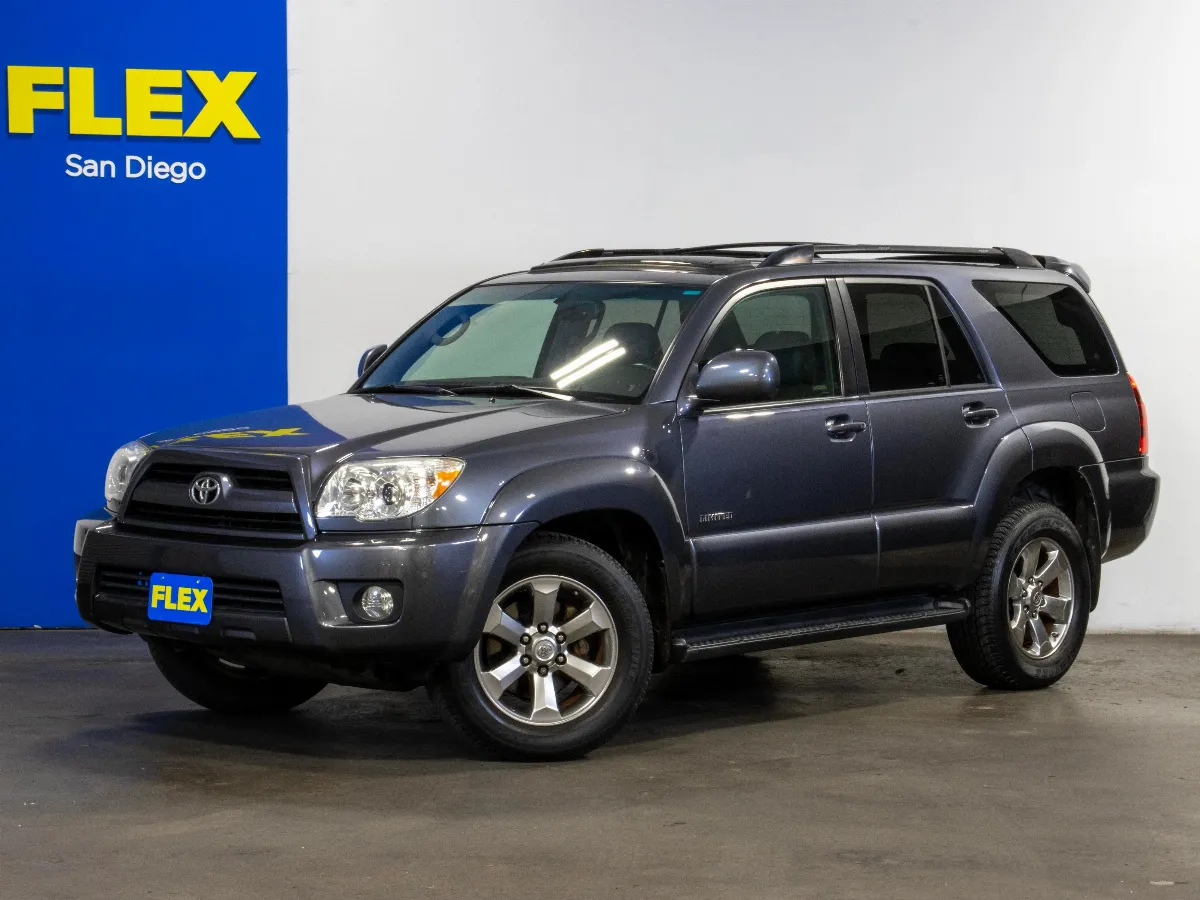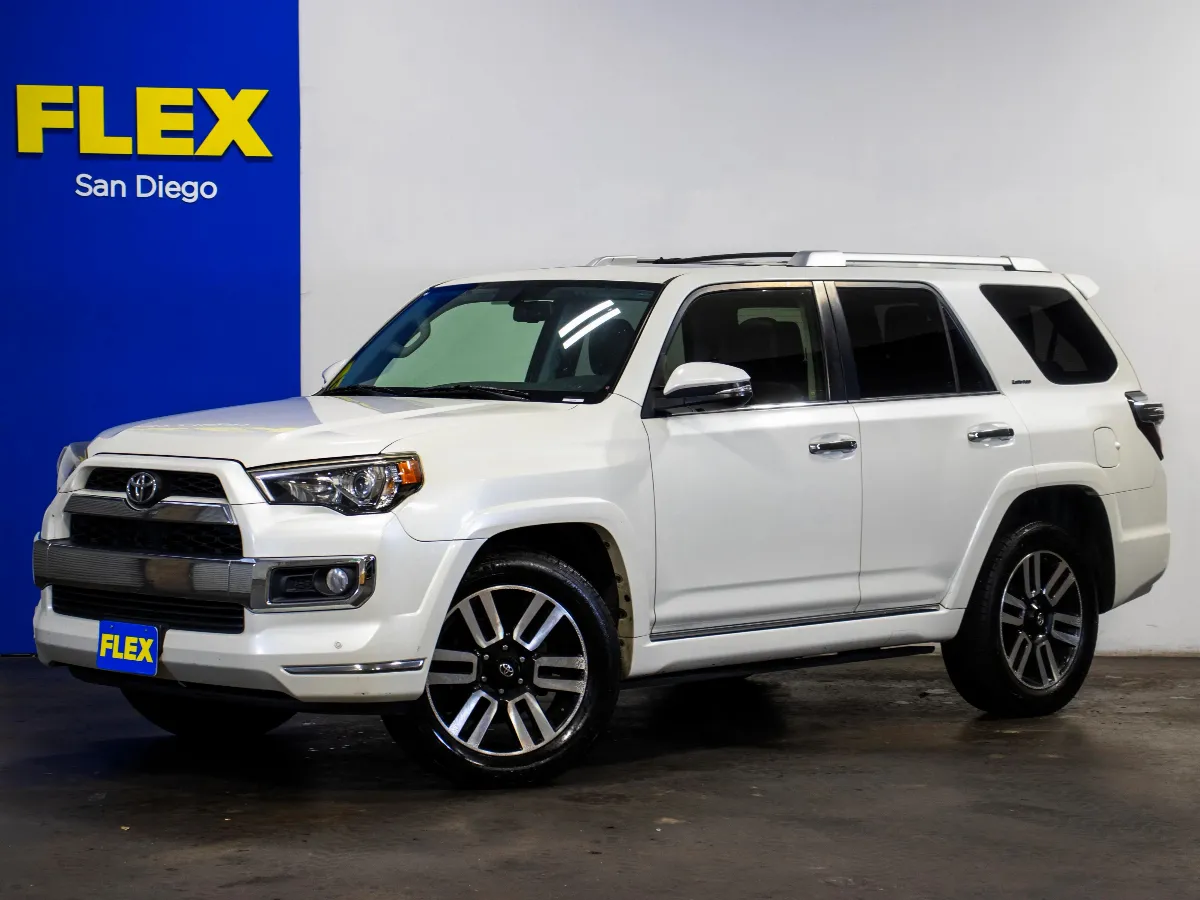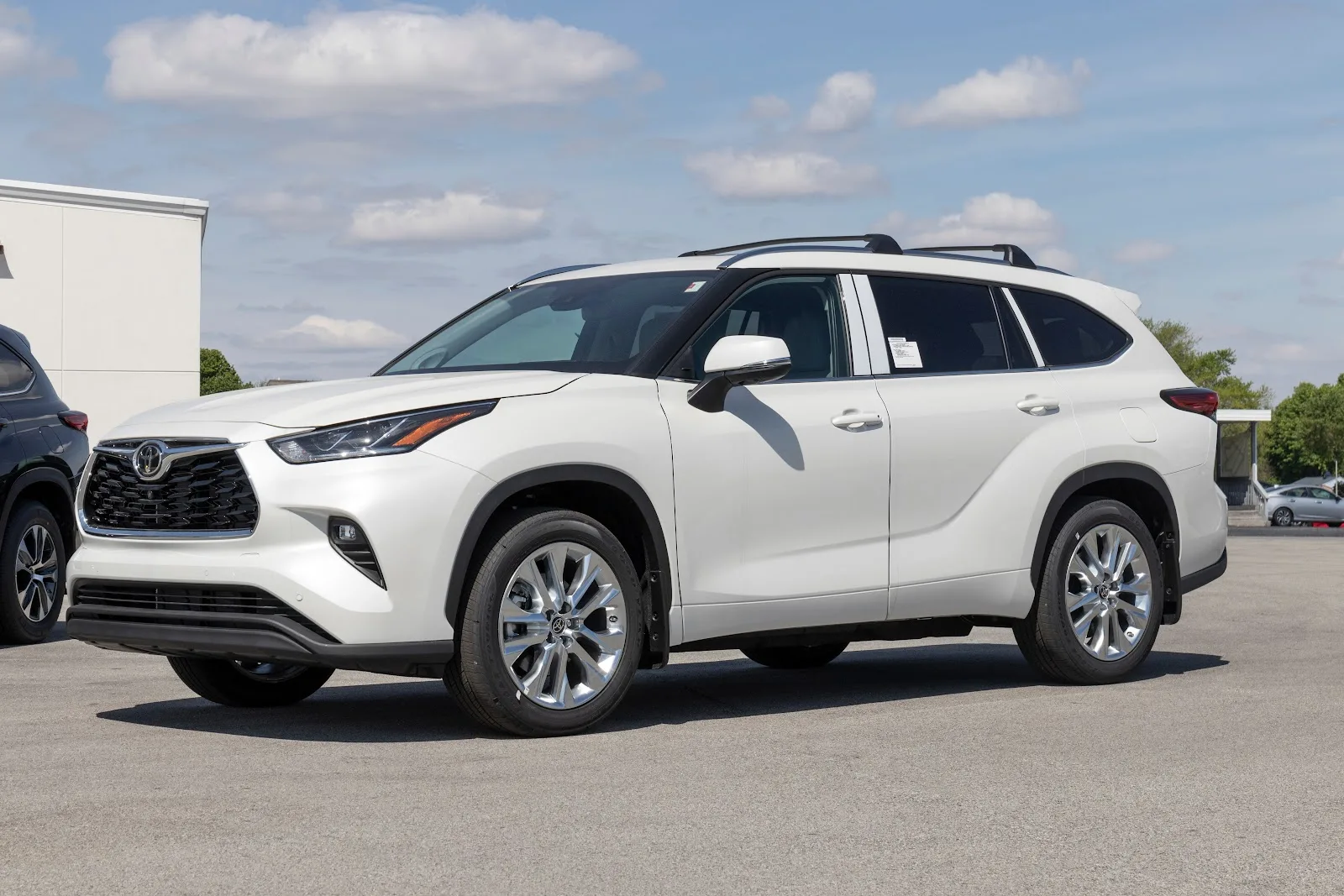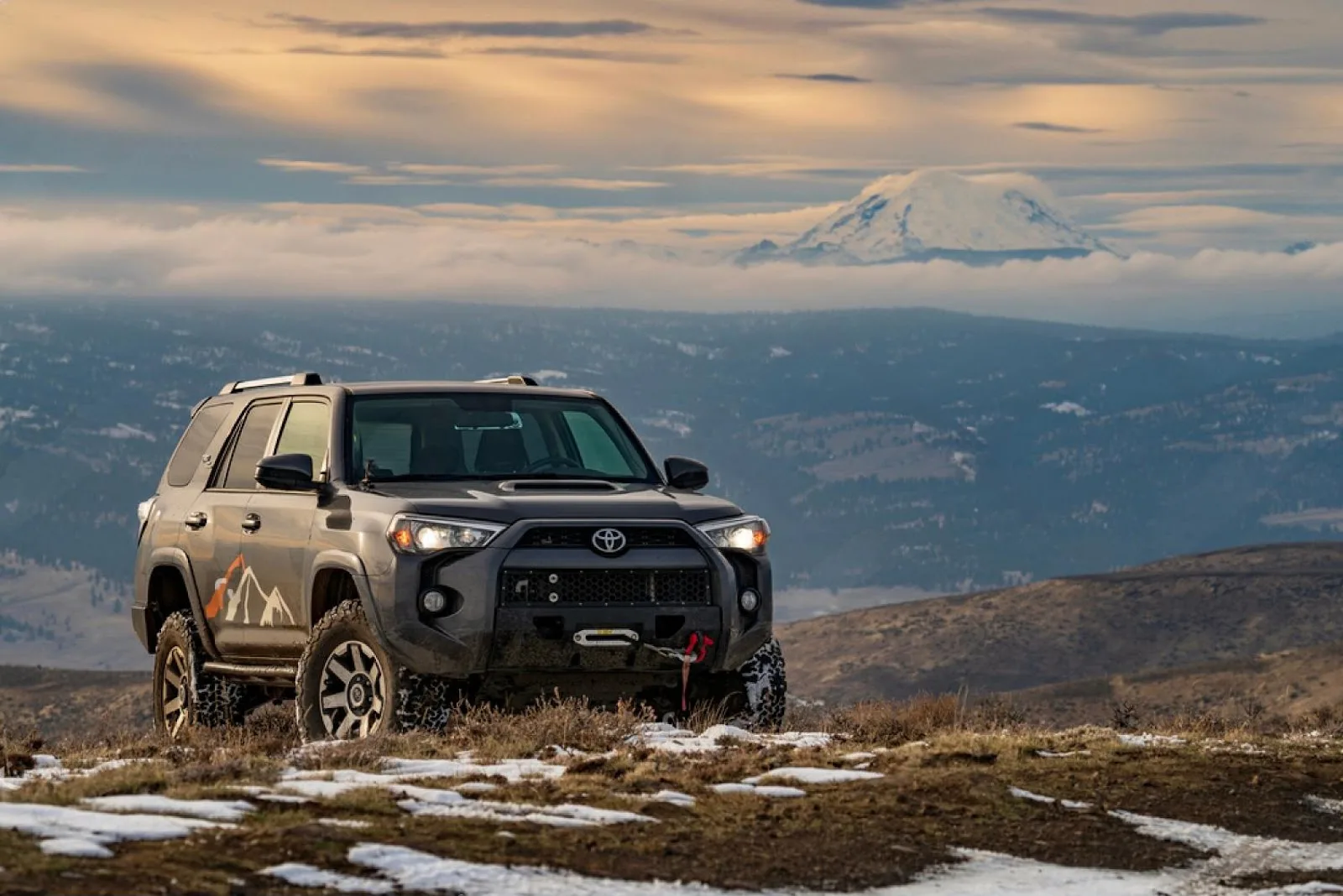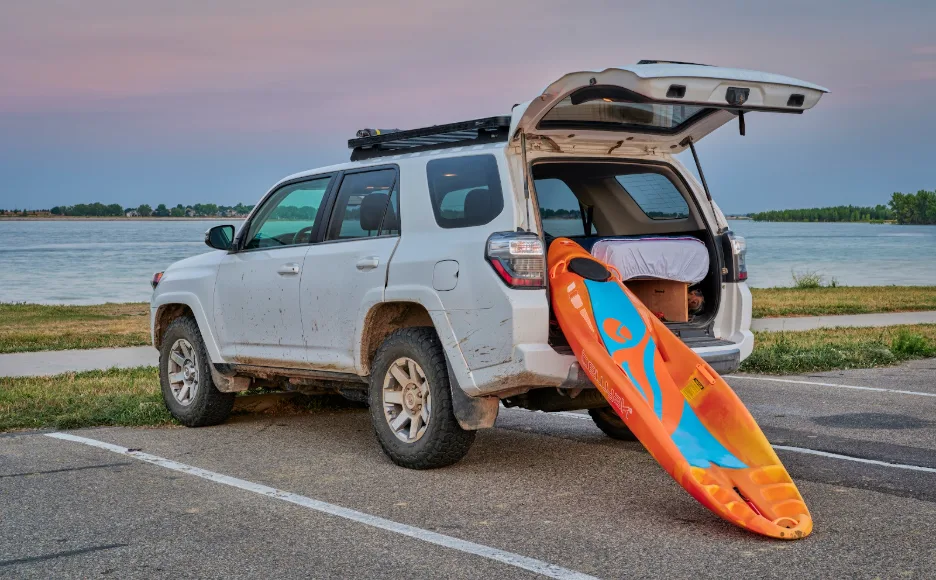Each Toyota 4Runner generation brings in a new level of off-road excitement packed in a mid-size chassis. Let’s find out all about 4Runner generations.
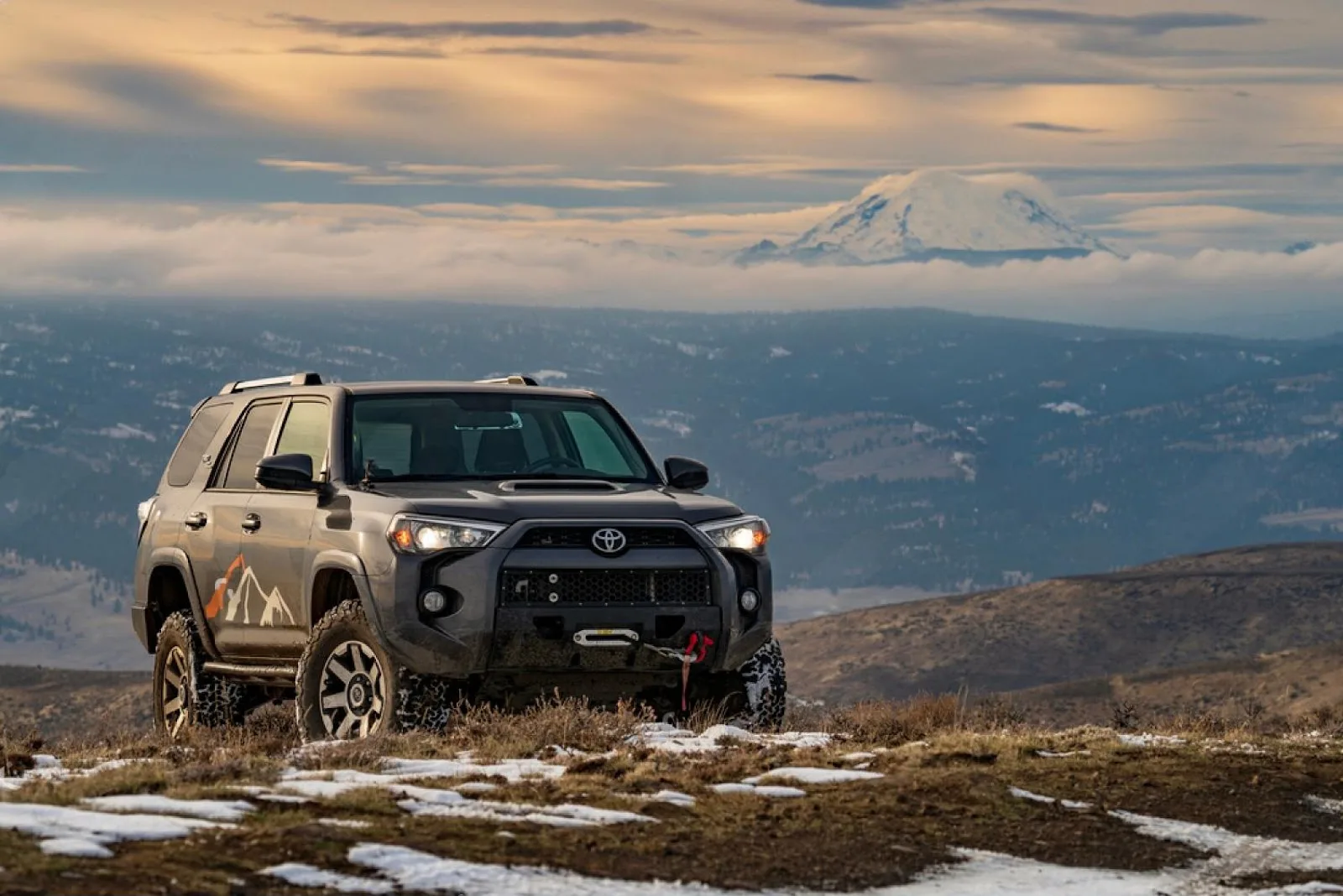
Brief history of the Toyota 4Runner
The Toyota 4Runner has been in production since 1983 and marketed in Japan under the Hilux Surf badge but is known in the States as the 4Runner. These first-generation SUVs were shipped to the U.S. without rear seats, so they could be classified as light trucks, which lowered the customs fees.
4Runner is a play on the word “forerunner” coined by Robert Nathan at the Saatchi & Saatchi advertising firm, which has always held naming contests for any of the new Toyota models. The “4” is a nod to its 4WD capabilities and the “Runner” means it can run cross-country without problems.
The first U.S. version hit the market as the 1984 ½ year model.
Popularity of the Toyota 4Runner
The 4Runner was positioned to help lead the 4WD boom that exploded by the late 1980s. U.S. sales figures for the 4Runner in its inaugural year are only a little more than 6,000 units, but in 1989, there were almost 37,000 new units sold. 2021 numbers reflect 144,696 4Runners driven out of showrooms nationwide, which only proves that the 4Runner is still very popular in the U.S.
4Runner is No Longer Available In Japan
Despite the appeal of this SUV in the United States, the 4Runner was discontinued for the Japanese market by early 1990 as the marketing team chose to focus on the similar, but more refined, Land Cruiser Prado model.
First Generation (1984-1989): The Birth of an Off-Road Icon
The first generation 4Runner was produced between 1983 and 1989 for the 1984-1989 model years. It was classified as a 3D compact SUV and was a derivative of the already popular Hilux (N50/N60/N70) and built on a short bed truck body.
From there, Toyota removed the rear window and added rear seats, a roll bar, and a removable fiberglass canopy. The last two items should have been a hint as to what Toyota foresaw for the 4Runner’s future.
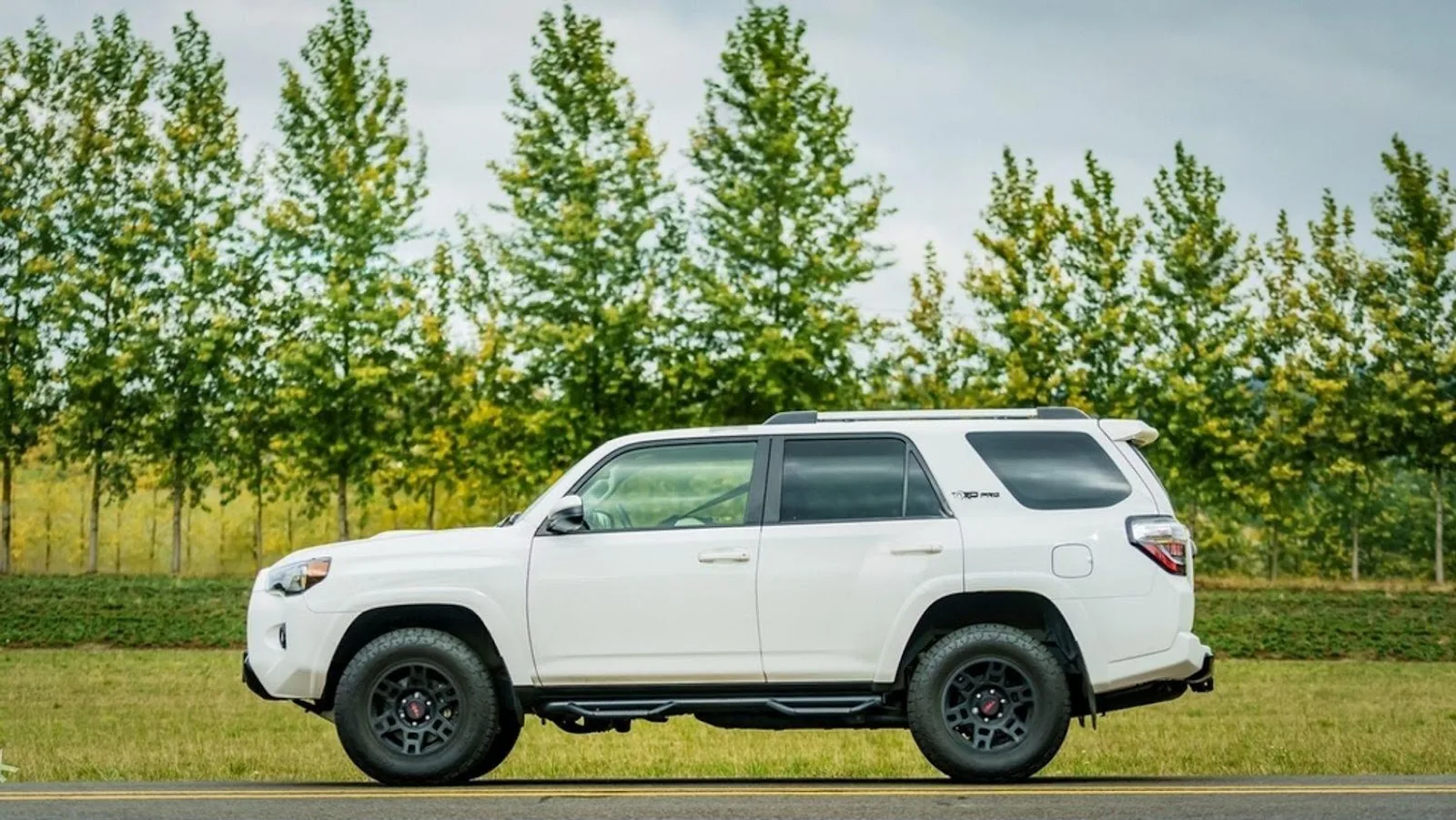
Overview and Design Philosophy of the First Generation 4Runner
Since Toyota used the Hilux as the base, they could focus their attention on the development of an Americanized 4WD vehicle. They looked toward the Ford Bronco and Chevy K5 Blazer for inspiration. Both of these SUVs were short-bed truck platforms with added seats and a fiberglass shell, and Toyota borrowed those features for the 4Runner.
The mechanics of the new 4Runner were identical to the Hilux 4×4, and all of the changes were from the B Pillar back. However, the suspension wasn’t beefed up enough to tolerate the additional weight of the extra seats and the new top, so there were complaints about a saggy rear end.
Key Features: Fixed Roof and Removable Fiberglass Cabin
Toyota played up the removable fiberglass cap by inviting owners to take the top off and let the sunshine in as part of their advertisement. This roof was held in place with 14 bolts and marketed as easy to remove; although most found it was more of a four-person job.
Nonetheless, between the roof and the retractable power rear glass, it was a good surf wagon for the SoCal crowd who embraced it like a long-lost friend.
The downside was that the top required proper maintenance to ensure a good seal or you could expect water leaks. Many owners had to replace the weatherstripping and seals if they wanted to keep the integrity of the top.
Two years in, Toyota moved away from the removable roof to a fixed steel roof, which strengthened the 4Runner’s structural rigidity. It also marked the move from a modified pickup truck into the more refined SUV found in future generations.
Main Engine Options (2.4L 22R-E Engine)
The first gen was powered by the 2.4L 22R-E inline-4 with a turbo option paired with a 5-speed manual transmission. This engine produced 96 HP and was fitted with a 2-barrel carburetor; it was underpowered for the additional weight of the seats.
The horsepower moved up to 100 when Toyota added fuel injection, and with the introduction of the turbo in 1986 and 1987, the horsepower moved up to 116.
Even though most models were manual transmission, the SR5 model offered a 4-speed automatic option.
In the last four years of this generation, Toyota dropped an optional 3.0L SOHC V6 under the hood.
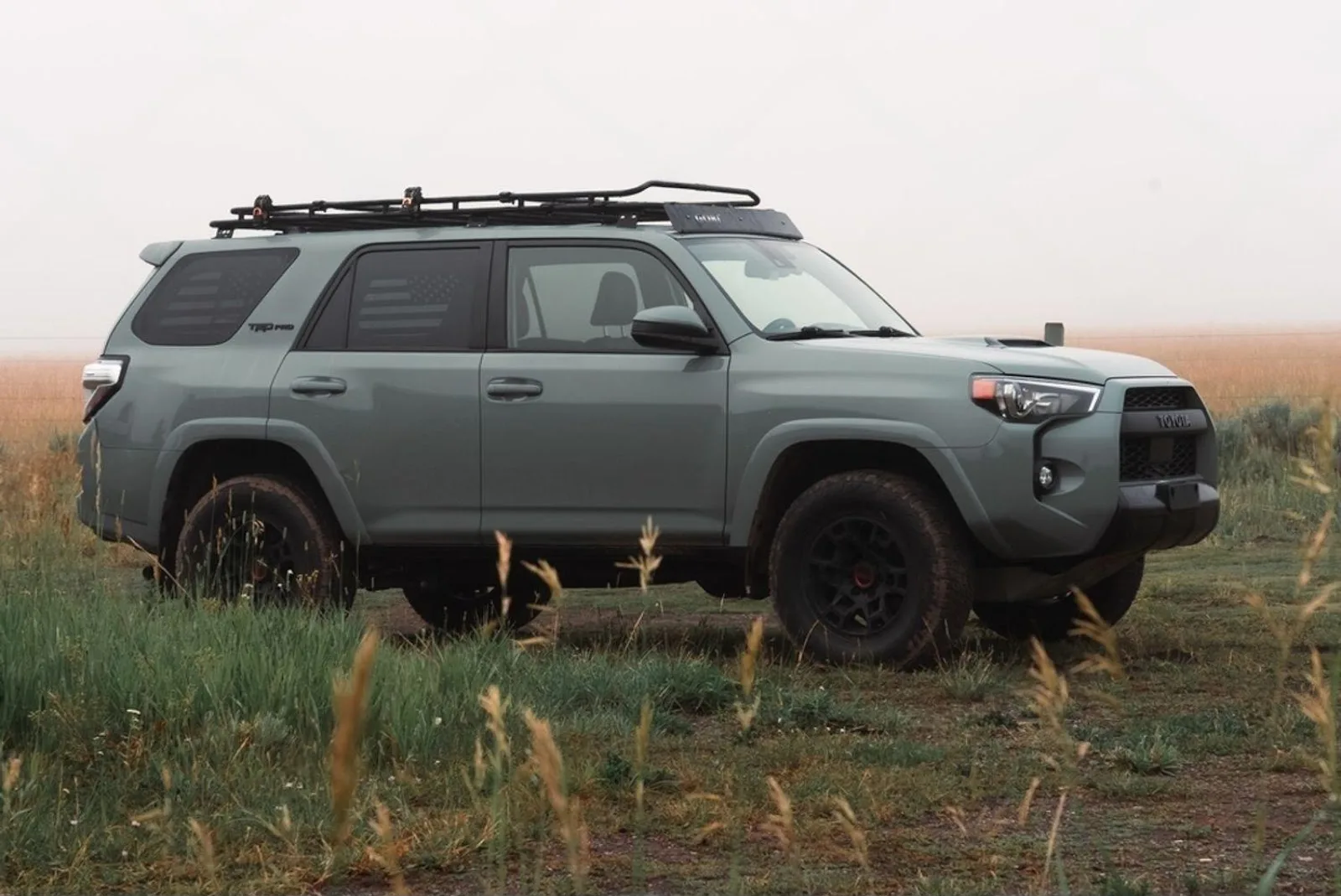
Off-Road Capabilities and Initial Strengths
The 4Runner had a solid front axle and the most ground clearance of its class. Car and Driver called the 4Runner smaller, more civilized, more comfortable, but still a rugged 4WD multi-purpose runabout/haulabout. It was capable of extreme off-roading, which appealed to those who may have been sad over the loss of the FJ40 Land Cruiser from the U.S. market.
Don’t look for any upscale features; there was no ABS and AC was an option, but the V6 5-speed was equipped with automatic locking front hubs.
Second Generation (1990-1995): Refinement and Expansion
The second generation (N120/N130) started with the 1990 model and ended with the 1995 model. While still classified as a compact SUV, Toyota added two doors and moved away from its pickup truck roots to a fresh full steel integrated body dropped onto its existing frame.
Design Changes and Styling Evolution in the Second Generation
While it still shared a Hilux powertrain and roughly the same appearance as the Hilux, the 4Runner was now coming into its own. Toyota replaced the Hotchkiss drive and leaf springs from the first generation with a solid axle and a multi-link coil spring. Unfortunately, these rear ends also had a sagging issue.
For the most part, the second generation had four doors, but 2-door models were still available. The 2-door models were also a single unit. Because of a tariff on light trucks imposed in 1964 – called the Chicken Tax – the 2-door models are more expensive due to their truck classifications and higher import fees. These types of tariffs have a way of making auto manufacturers get creative when it comes to working around extra costs.
Toyota gave the 4Runner a facelift by adding a one-piece bumper and modular headlights. A wide body was also introduced.
Introduction of a Full Metal Roof and Improved Structural Design
Since Toyota abandoned the fiberglass top for the fixed steel roof in this generation, these 4Runners were more structurally sound. In 1993, Toyota reinforced the roof for safety reasons; although none of these vehicles had great safety ratings due to their thin, metal doors with limited reinforcement.
Engine Lineup (2.4L and 3.0L V6) and Performance Enhancements
The U.S. 4Runner kept the 22R and 3VZ engine options and paired them with a 4-speed automatic transmission. This combination offered 15 MPG in the city.
| Engine | Years | Models | Horsepower | Torque |
|---|---|---|---|---|
| 2.4L 22R I4 | 1984–1985 | Base (SR5 optional) | 96 hp | 129 lb-ft |
| 2.4L 22R-E I4 | 1985–1989 | Base, SR5 | 116 hp | 140 lb-ft |
| 2.4L 22R-TE I4 (Turbo) | 1986–1987 | Turbo SR5 | 135 hp | 173 lb-ft |
| 3.0L 3VZ-E V6 | 1988–1989 | SR5, Deluxe | 150 hp | 180 lb-ft |
Suspension Upgrades and Improved Off-Road Capabilities
As we mentioned, the multi-link suspensions were prone to sagging, but that didn’t diminish its all-terrain capabilities. The good news is that due to shared components between the first-generation 4Runner and the fourth and fifth-generation Toyota pickup, modifications are relatively easy. It doesn’t take much to upgrade or modify this SUV with aftermarket overlanding add-ons.
The Rise of 4-Door Models
The tax status of the 2-door imports may have been the reason for more focus on the 4-door, but this was also during a time when people were looking for larger SUVs rather than light-duty smaller trucks. This interest in large SUVs continues today.
Third Generation (1996-2002): Midsize Evolution
The third generation (N180) in 1996 saw significant changes to the 4Runner that included a redesign that put it more closely related to the Tacoma rather than the Hilux. This generation included model years 1996-2002.
Significant Changes to the Body Shell and Chassis in the Third Generation
With the redesign came the reclassification to a mid-sized SUV because it now shared a chassis with the Land Cruiser Prado. The new body shell was 58mm/ 2.3 inches longer than previous generations, and it had a 1-inch wider track on a longer wheelbase.
More Refined Design and Expansion into Luxury Segments
This generation introduced a more polished interior, reflecting the shifting SUV market’s focus on higher-income buyers catering to suburban lifestyles and family-friendly outings. The one thing the new 4Runner didn’t dismiss was its 4WD capabilities; it does share the chassis with the Land Cruiser, after all.
Coil spring suspension and rack and pinion steering made driving long distances more comfortable, making it a good vehicle for long-distance vacations.
Engine Options (2.7L I4 and 3.4L V6) and Key Characteristics
With the 4Runner’s new relationship with the Tacoma, it stands to reason that the sharing of parts would extend to the powertrain.
The 22R-E was replaced by the 2.7L 3RZ-FE with 150 horsepower at 4800 RPM – a boost of 38 HP – and 177 lb-ft of torque with a 35 lb-ft increase. This 4-cylinder engine provided good efficiency for lighter use but was less powerful than the V6.
The 3.0L 3VZ-E V6 was replaced by the 3.4L 5VZ-FE V6 which increased the horsepower by 33 to 183 and the torque by 32 lb-ft to 217 lb-ft. This was the most popular option amongst buyers since it delivered significantly more power and torque, making it ideal for those looking for cross-country excitement.
Both engine options are known for their trustworthiness and have contributed to the popularity of the Gen 3 4Runners.
The new 4Runner was available in three trim levels with the V6 only available in the SR5 and the Limited models.
In the 4WD models, there were three selections: 2WD High Range (H2), 4WD Low (L4), and 4WD High Range (H4). A factory-installed electric rear differential locker was available.
Interior Enhancements and Improved Comfort
The longer body opened up more legroom in the cabin, as well as increased cargo space. With a target on the upscale market, Toyota added AC and a basic stereo system with a tape deck. They also added tilt steering, and in the higher trim levels, power windows, locks, and cruise control were part of the upgrade packages.
There was more focus on creature comforts than in previous generations because the competition was heating up from Ford and GM, as well as Jeep. The 4Runner could hold its own when it came to off-roading, but the Chevrolet Tahoe and Yukon were not only trail-ready, they were luxurious inside with leather seats, premium sound systems, and more.
Advances in Safety Features and Technology
Since the 4Runner safety ratings were dismal in the first two generations, mainly due to the doors, the 1990s were now focused on safety. For the first time, drivers and passengers were given airbags, and ABS was now a standard feature.
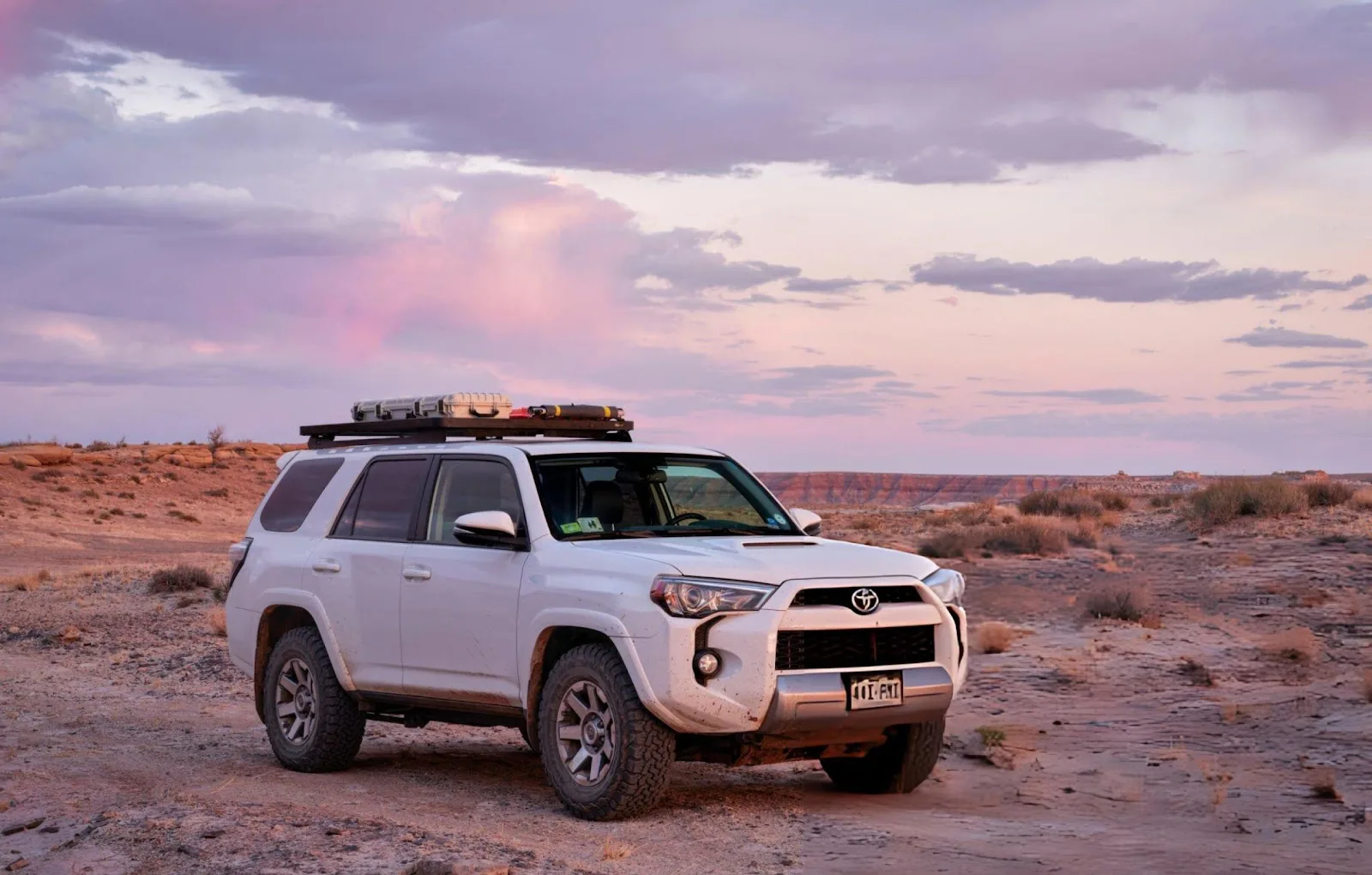
Fourth Generation (2003-2009): Versatility and Power
Toyota introduced the fourth generation 4Runner (N210) in 2003, and it continued until 2009. With this new generation, serious body and chassis changes made the new 4Runner more car-like when it came to ride comfort and drivability, as well as a sleeker appearance.
Fourth Generation Design and Its Resemblance to the Land Cruiser
Toyota gave this generation the look of the Land Cruiser Prado 120 Series, using the same exterior styling with three trim levels: SR5, Sport, and Limited.
By 2006, after listening to consumer feedback, Toyota decided to give the 4Runner a facelift. While most of the facelift is cosmetic, like changes to the grill slats, bumper upgrades, lower fascia redesign, and the relocation of the turn signals, some changes may have gone unnoticed. Specifically, Toyota thickened the front windscreen and front side windows to reduce road noise.
Other changes included a smoother side profile with softer fender flares and seamless lower door moldings.
Toyota also used this update to bring interior technology up to date with the addition of AUX ports and a more refined instrument cluster and navigation on the upper trim levels.
Introduction of V6 and V8 Engines and Enhanced Performance
Probably one of the most important fourth-generation changes came from under the hood. The 4-cylinder was dropped from the engine lineup and a V8 was added. Even the old V6 was replaced by the 1GR-FE 4.0L V6 married to a 5-speed automatic after an initial 4-speed automatic was dropped after 2005. The motor is capable of 245 horsepower and 282 lb-ft of torque.
The 2UZ-FE 4.7L V8 is standard with a 5-speed automatic, capable of 235 HP and 320 lb-ft of torque in the initial models, but the 2005 models saw the introduction of VVT-I that increased the output to 268 horsepower and 315 lb-ft of torque.
| Engine | Years | Models | Horsepower (hp) | Torque (lb-ft) |
|---|---|---|---|---|
| 4.0L 1GR-FE V6 | 2003–2009 | Base, SR5, Sport, Limited | 245 hp | 282 lb-ft |
| 4.7L 2UZ-FE V8 | 2003–2009 | SR5, Sport, Limited | 235 hp (2003–2004) / 260 hp (2005–2009) | 320 lb-ft (2003–2004) / 306 lb-ft (2005–2009) |
The V6 saw an estimated 17 MPG city and 20 MPG on the highway, while the V8 was 15/19 respectively. Towing capacity on the V6 was 5,000 and 7,300 for the RWD V8 models.
You can see the Land Cruiser influence that lives under the hood of this generation.
Addition of Third-Row Seating and Expansion into Luxury Models
While the 4Runner was still body-on-frame construction and had a solid rear end that made the interior smaller, Toyota added a third-row seating option that made it a little cramped in the back.
In addition, the interior was geared toward the luxury class buyer with the Limited trim level bearing 17-inch alloys, heated side mirrors, illuminated running boards, an 8-way power driver’s seat, and such as a 10-speaker JBL audio system.
Double Wishbone Suspension and Improved Ride Quality
The luxury brings a more car-like ride, thanks to the X-REAS (Cross-Linked Relative Absorber System) suspension. Standard on the Sport trim and optional for SR5 and Limited models, this system links shocks diagonally to enhance stability, reduce body roll, and improve handling on corners and uneven terrain.
On the Limited, this option sometimes included a rear auto-leveling height-adjustable air suspension. The X-REAS system connects the dampers diagonally through hydraulic hoses and a mechanical center valve, effectively reducing body roll during sharp turns.
All 4Runners were equipped with durable plastic skid plates, and additional features included Hill-Start Assist Control (HAC), and Downhill Assist Control (DAC) only on the 4WD models.
Increased Interior Space and Cargo Capacity
Even though the addition of the third-row seats crowded the interior when installed, there was an increase in cargo capacity when a double-deck cargo system was installed.
Fifth Generation (2010-2024): Heritage Meets Modernity
Toyota introduced the fifth generation (N280) in 2009 for the 2010 model, and it continued until 2024. This generation shares a platform with the J150 Land Cruiser Prado and the FJ Cruiser. Even though it was only manufactured in Japan, it was only produced as a left-hand drive.
Introduction of the Fifth Generation and Redesign of the Exterior
For the first couple of years in this generation, Toyota kept the outward appearance the same, but by 2013, the 4Runner was due for a facelift beginning with the 2014 models.
Cosmetic changes to the fascia and headlights led the way to an updated interior. The headlights were changed to projectors and LED tail lights graced the back end. Bigger changes were coming in 2015.
Expansion of Trim Levels
The 4Runner started the generation with three trim levels: SR5, Limited – both previous models – and the new Trail Edition, which had been an optional package in previous generations.
However by 2015, with the outdoor craze in full swing in the U.S., Toyota was ready to introduce consumers to the TRD Series (Toyota Racing Development). They created new trim levels that included the TRD and the TRD Pro, and in 2016, the TRD Off-Road (previously the 4Runner Trail) and the TRD Off-Road Premium (previously the Trail Premium) joined the lineup.
Along with these trim levels came optional packages like the Nightshade for the Limited that blackened out the badging, wheels, fascia, and some interior trim pieces.
Adoption of Kinetic Dynamic Suspension System (KDSS) and Enhanced Off-Road Capabilities
As part of Toyota’s commitment to trekking capabilities, they added the Kinetic Dynamic Suspension System (KDSS) and CRAWL Control to the Trail Edition (later renamed the TRD Series).
KDSS has been used in the Land Cruisers since the 200 Series and in the Lexus GX 470. It is designed to enhance both on and off-road performance by dynamically adjusting the sway bars. Since it’s an automated system, the ride is adjusted as the terrain changes.
Evolution of Engine Options (4.0L V6) and Technological Advancements
By this generation, Toyota revised the power options for the 4Runner. The 2WD was available with the 2.7L 2TR-FE inline 4 for only one year (2010), and the V8 was not brought forward to the new generation.
The new kid on the block was the 4.0L 1GR-FE V6 with Dual VVT-I for improved horsepower, torque, and fuel efficiency. After 2010, the V6 was the only engine offered and was paired with the 5-speed automatic; the 4-speed automatic was dropped when the 2.7L left the lineup.
Features of the TRD Pro Trim and Introduction of Entune Infotainment System
So much of Toyota’s past is focused on its 4WD capabilities and off-road heritage, so it’s no surprise that as this generation of 4Runners evolved there was a keen interest in trail performance.
This is where the TRD Pro trim stands out from the rest of the 4Runners.
With its introduction in 2015, the 4Runner TRD Pro became a member of the TRD Pro Series family that includes the Tacoma, Sequoia, and Tundra. Everything about this vehicle is geared for adventure and equipped with parts that can handle extreme conditions.
You’ll find TRD Bilstein shocks, TRD-tuned front springs, and a TRD skid plate. To make these trim levels even more inviting, Toyota added exclusive colors for each year. The 2015 intro year featured Inferno Orange as its exclusive color.
No cross-country trip is complete without a soundtrack, so the new Entune infotainment center became the means of blasting tunes while blasting hills, checking GPS coordinates, viewing the backup camera, and connecting you to Safety Connect for assistance. Only the Limited trim featured a JBL amplified audio system.
Standardization of Toyota Safety Sense-P (TSS-P) and Safety Improvements
When you look back at the first generation’s poor safety record, it’s easy to understand why by this time Toyota had devised safety features that added many mitigation systems. The Toyota Safety Sense-P (TSS-P) was now standard in all models.
These new safety features were designed to reduce the risk of accidents by including a pre-collision system with pedestrian detection, lane departure alert with steering assist, Dynamic Radar Cruise Control, and automatic high beams.
In 2019, many of these technologies were in their infancy, so for these to be standard features at this time says a lot about Toyota’s desire to make their vehicles safer at all trim levels.
Special Editions and 40th Anniversary Models
If you know Toyota, you know there will be special editions and anniversary models. Like the exclusive paint color for the TRD Pro, Toyota offered options like the Nightshade package on the Limited, and the 40th Anniversary Edition for 2023.
Toyota only produced 4,040 units for the Anniversary Edition, and they included heritage graphics with retro-inspired stripes of yellow, orange, and red, bronze-colored 17-inch wheels, black badging, and 40th Anniversary logo, as well as special interior stitching and commemorative plaques.
2020 saw the introduction of the Venture Edition, which was built for 4WDers. It comes with a Yakima Mega Warrior Roof Rack for all of the things you can’t get into the cargo area, blacked-out exterior accents, a rear spoiler, and standard part-time 4WD. Toyota even dropped all-weather mats on the floor, so get your feet as dirty as you like. The Venture brings the trim level up to eight.
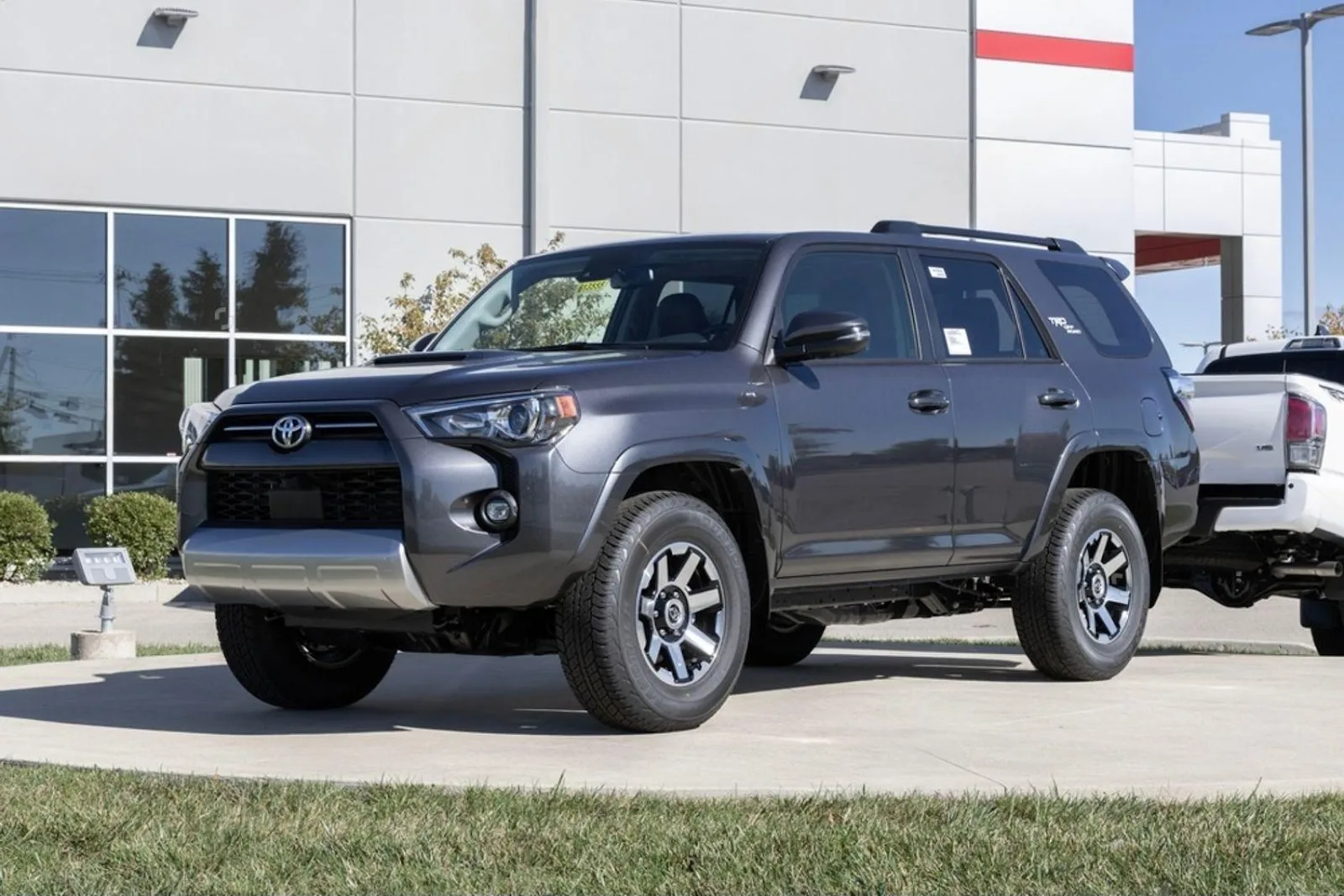
Sixth Generation (2025-Present): A Modern Off-Road Icon
The sixth generation was unveiled in 2024 for the 2025 model year.
Debut of the Sixth Generation and Its Connection to Land Cruiser, Tundra, and Lexus GX
What connects this newest generation to the Land Cruiser, the Tundra, the Lexus GX, and the Tacoma is the GA-F platform. This platform supports a wheelbase length of 112.2 to 164.6 inches and provides the foundation for body-on-frame vehicles like the full-sized SUV or pickup truck.
This TNGA platform is the result of years of development and stands for Toyota New Global Architecture.
Major Overhauls to Exterior Design and Interior Upgrades
With this new generation come major changes to the exterior. The latest 4Runner is now 2.4 inches longer than previous models and has nine trim levels with a focus on the “4” in its name with standard parts like ARB’s Old Man Emu (OME) 2.5-inch forged shocks in the Trailhunter model.
As for the interior, this is 2025, so you know all of the technology, safety, and entertainment systems are state-of-the-art. When the design team put pen to paper, they took their inspiration from the desert racing scene: High Lift, Big Tires, and Lean Body. You’ll find the Tacoma and 4Runner bear a striking resemblance with their rugged with a purpose appearance.
Toyota brought back the wrap-over quarter glass and the roll-down rear window found in the early 4Runner years making this an authentic 4Runner. Second-row tumble seats give you plenty of cargo options.
Transformation of Powertrain Options (2.4L Turbo Engine and Hybrid Option)
Depending on the trim level, the new 4Runner is powered by a turbo 2.4L: 4-cylinder powertrain that includes the i-FORCE engine capable of 278 horses and 317 lb-ft of torque. This engine is standard in the SR5, TRD Sport, TRD Off-Road, and Limited trims. The i-FORCE MAX hybrid is standard in the TRD Pro, Trailhunter, and Platinum models and an option in the TRD Off-Road and the Limited models.
This hybrid includes the 2.4L turbo paired with a 48-HP electric motor and an 8-speed transmission for 326 horsepower and 465 lb-ft of torque making this the most powerful engine ever offered in a 4Runner.
New Trim Levels
In addition to the SR5, TRD Sport, TRD Off-Road, Premium, Limited, and TRD Pro, Toyota added the TRD Sport Premium, Trailhunter, and Platinum to the sixth generation lineup. For a complete description of the trim levels in 2025, read this article here.
Introduction of Advanced Infotainment Systems and Technology
Toyota decided to update and upgrade all of the technology in the cabin with the introduction of the Advanced Infotainment System. You have your choice between an 8-inch and a 14-inch touchscreen, depending on the model.
Also included is connectivity to your favorite app center, and there’s an optional Qi wireless charger pad with enhanced power output.
You’ll find USB ports scattered about the cabin, including the back seats. You can choose your instrument cluster size, too. The lower grades come with a 7-inch screen, and the higher grades have a 12.3-inch cluster.
Enhanced Safety Features and Standardized New Technologies
The technology doesn’t stop at the infotainment center; you’ll find the latest safety features throughout all of the models. Toyota Safety Sense 3.0 is standard in all of the models and includes the following:
Pre-Collision System with Pedestrian Detection (PCS w/PD)
Detects potential frontal collisions with vehicles, pedestrians, and bicyclists, providing alerts and automatic braking if necessary.
Lane Departure Alert with Steering Assist (LDA w/SA)
Warns the driver if the vehicle unintentionally departs from its lane and provides gentle steering corrections to help maintain lane position.
Lane Tracing Assist (LTA)
Works with Dynamic Radar Cruise Control to keep the vehicle centered in its lane by detecting lane markings or the path of the preceding vehicle.
Automatic High Beams (AHB)
Automatically switches between high and low beams based on surrounding traffic conditions to enhance nighttime visibility without blinding other drivers.
Full-Speed Range Dynamic Radar Cruise Control (DRCC)
Maintains a preset distance from the vehicle ahead, adjusting speed as necessary, and can bring the vehicle to a complete stop if needed.
Road Sign Assist (RSA)
Recognizes certain road signs and displays them on the vehicle’s multi-information display, aiding driver awareness.
Proactive Driving Assist (PDA)
The Proactive Driving Assist (PDA) is now included in all trim levels. The PDA system uses cameras and radars to make brake and steering adjustments as you drive. It is designed to keep your distance from other cars, pedestrians, bicycles, and brake in curves.
Overview of the Size of the Toyota 4Runner
| Generation | Years | Length (inches) | Width (inches) | Height (inches) |
|---|---|---|---|---|
| 1st | 1984–1989 | 174.60 | 66.50 | 66.10 |
| 2nd | 1989–1995 | 176.77 | 66.54 | 69.88 |
| 3rd | 1996–2002 | 183.31 | 66.54 | 67.51 |
| 4th | 2003–2009 | 188.98 | 73.82 | 69.09 |
| 5th | 2010–2024 | 190.20 | 75.79 | 71.50 |
| 6th | 2025 – (future) | 194.9 | 77.80 | 70.78 |
Toyota 4Runner’s Off-Road Legacy
Toyota is concentrating on the “4” in the 4Runner name as two of the incoming trim levels can testify to. The TRD Sport Premium and the Trailhunter are focused on overlanding; the Trailhunter has specific equipment like standard steel underbody protection, frame-mounted rock rails, and an ARB roof rack. The Trailhunter is equipped with 33-inch Toyo Open Country A/T III tires on 18-inch bronze rims.
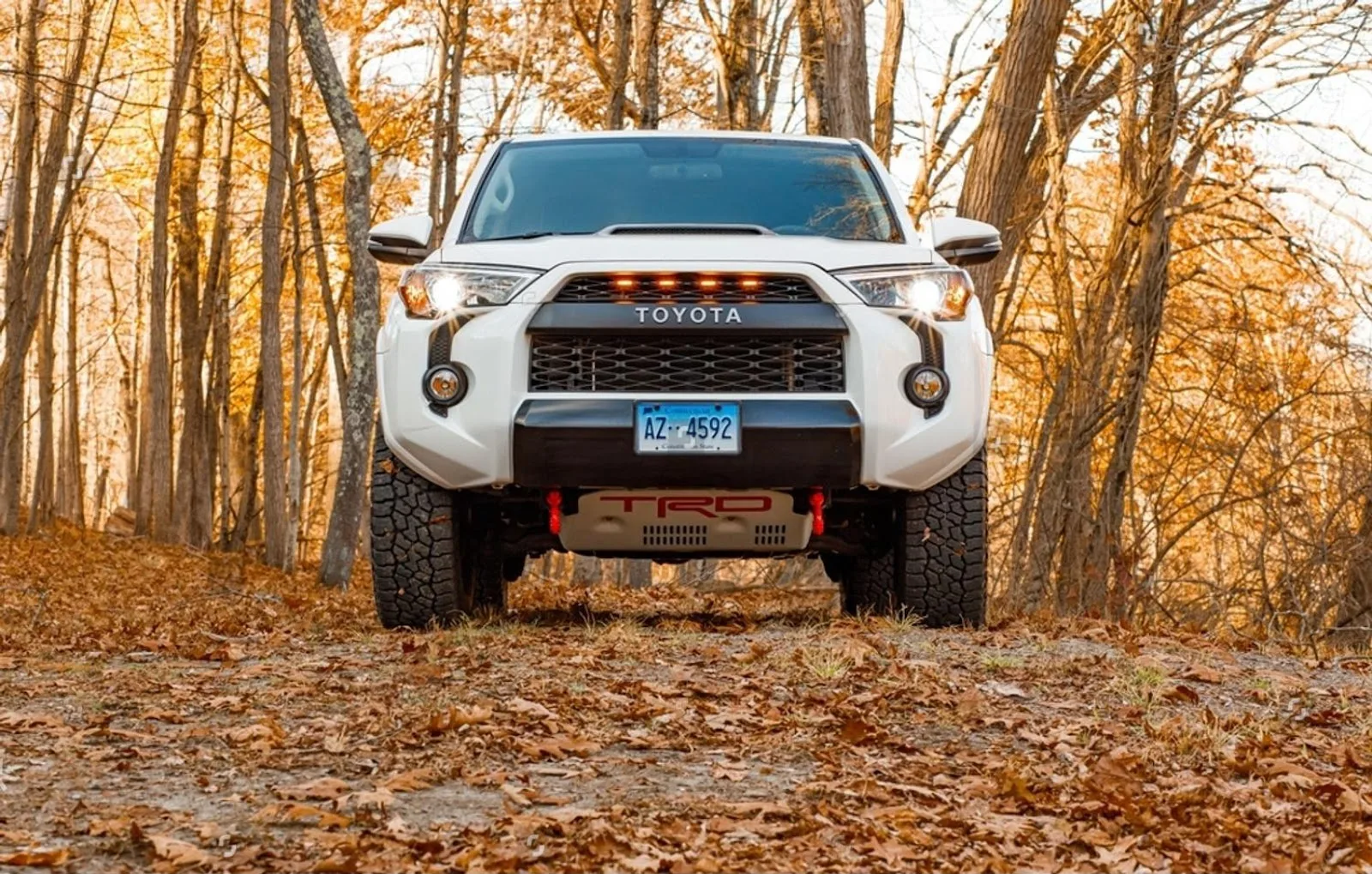
Off-Road Capabilities
In addition to sharing a platform with the latest Land Cruiser, the 4Runner is steeped in 4WD history, so even with the new luxurious interior, high-tech options, and car-like ride, dirt still runs through this SUV’s veins.
Comparison with Other Off-Road SUVs
| 4Runner | Ford Bronco | Jeep Wrangler | Toyota Land Cruiser 250 | |
|---|---|---|---|---|
| Strength | Robust build quality, spacious cargo area, and a reputation for reliability. | Exceptional trekking capability with options like the Sasquatch package (35-inch tires, locking diffs, and advanced 4×4.) Turbo, modern tech with body cameras. Removable roof and doors. | Legendary 4WD capability with advanced systems like Rock-Trac 4×4 and solid axles. Wide variety of trims, including Rubicon for serious off-roading. | Robust body-on-frame powered by a hybrid with excellent torque and comfortable ride both on and off-road. Good visibility, maneuverability, and a strong focus on safety. |
| Weakness | Before 2025, a dated interior design, poor fuel economy, rough on-road ride quality, and a lack of advanced tech compared to newer SUVs. | Questionable long-term stability of the turbo, interior build not as nice as competitors, and high demand leads to dealership markups. | Ride quality can be rough on pavement. Dependability and build quality are inconsistent compared to Toyota, and the interior is less spacious. | Sluggish engine and below fuel efficiency, as well as limited interior cargo space and a high price point. The interior is considered dated compared to newer competitors. |
| Best for | A driver who prioritizes off-roading and needs a large cargo space. It’s a plus that it’s reliable. | Buyers looking for a modern, 4WD capable SUV with tech-focused features and rugged appeal. | Hardcore 4WD enthusiasts who want an adventure-ready SUV with open-air capability. | Buyers looking for a comfortable on-road experience combined with an off-road vehicle. |
If you’d like to know more about the Land Cruiser models, then contact us. We’re the number one Land Cruiser dealership in Japan and have access to a large supply of used Land Cruisers, as well as JDM cars and used 4Runners. If you prefer something a little more modern, then check out our Renoca Series, which is a renovated classic with all of the current technology like you’d find in the Gen 6 4Runner. Get in touch here for more information.
Evaluation of 4Runner’s Durability and Reliability
Since the 4Runner belongs to the Toyota family, the solid and dependability part is baked into its DNA. With Land Cruisers with over 400,000 on the odometer, the 4Runner is capable of achieving equally high mileage.
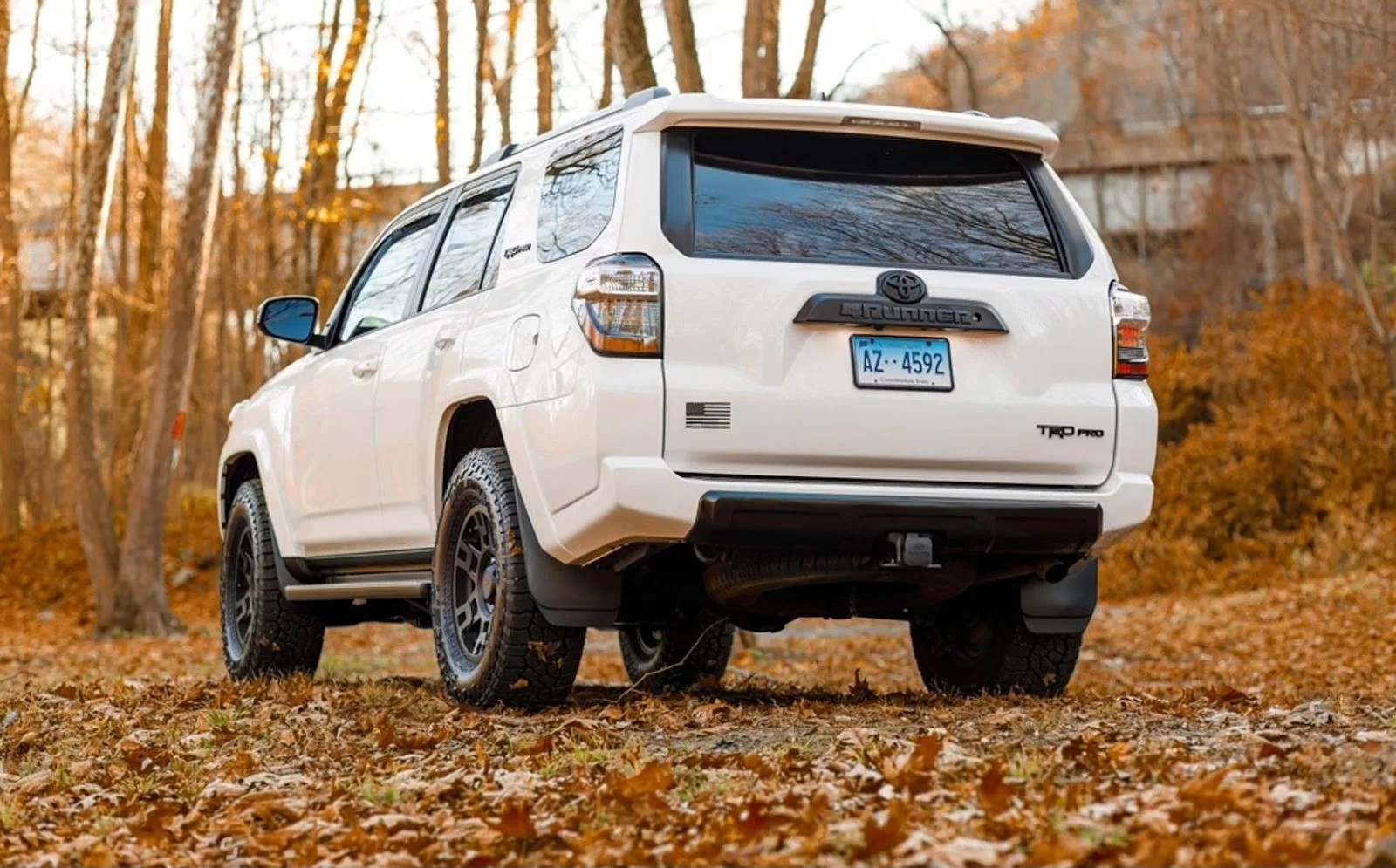
Toyota 4Runner’s Resale Value and Long-Term Durability
Toyota is known for its longevity and resale value. We can look to the past to predict the future of the newest 4Runners.
Reasons for the 4Runner’s High Resale Value
While the name Toyota is synonymous with long-lasting 4WD vehicles, there are other reasons why the 4Runner has a high resale value. Here are a few of them:
- Strong off-road vehicle
- Loyal customer base
- Limited competition
- Timeless design
- Simple reliable engineering
- High demand and low supply
- Resale market trends favor 4WD SUVs
Importance of Long-Term Durability and Maintenance
If you want to get the kind of mileage many 4Runner owners see on their odometer, then you must do regular maintenance on it. Other than the usual car maintenance schedule like oil changes, here are some of the 4WD-specific maintenance to do:
- Inspect the drive shaft boot
- Lubricate propeller shaft
- Tighten nuts and bolts
Here are some other maintenance items for a 4Runner:
- Change the engine oil and filter
- Rotate the tires
- Adjust the parking brake
- Adjust the accessory belts
- Perform a front-end alignment
- High-speed balance on all four tires
- Inspect fluids and top off as needed
- Inspect tires and reset tire pressures as needed
- Replace the air filter regularly
The first service for a 4Runner is usually at 5,000 miles or six months, whichever comes first. After that, the 4Runner should be checked out every six months.
Evidence of Durability beyond 200,000 Miles
When a reader wondered if 200k was too many miles for a used 4Runner on the 4Runners.com forum, the answer came from several owners that “no, it was not too many.” Nightowl says that he has over 319,000 on a second engine, with the original transmission and transfer case, and differential on his 1985 4Runner.
For those who are mechanically inclined, routine maintenance is second nature, which makes the 200,000-mile mark inconsequential.
No matter how many miles are on the 4Runner, you need to pay attention to suspension wear, steering component wear, as well as the normal routine belts and fluid changes. While some 4Runner years get more miles than others, most 4WDers agree that the 4Runner is as indestructible as the Land Cruiser.
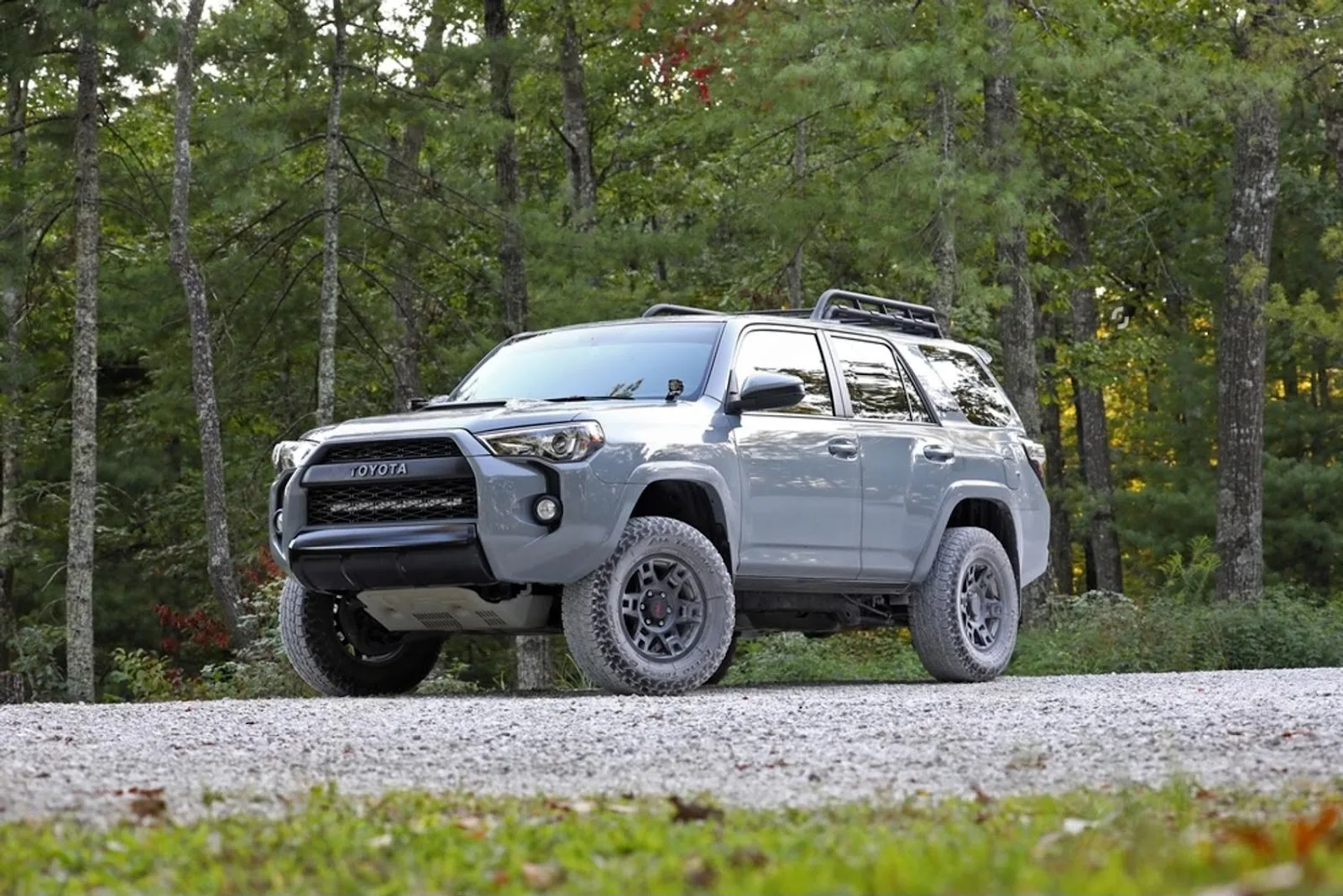
Conclusion
From humble beginnings to a powerhouse, the 4Runner has the stamina to go the distance.
Summary of the 4Runner’s Legacy and Its Iconic Status
The Toyota 4Runner is popular primarily due to its outstanding overlanding capabilities, renowned trustworthiness, and reputation for longevity, making it a favorite among outdoor enthusiasts and families who need a vehicle that can handle tough terrain while also providing dependable daily transportation; its strong body-on-frame construction further contributes to its durability.
Key points about the 4Runner’s popularity:
Off-road prowess
– Considered one of the best 4WD SUVs, capable of navigating challenging trails and terrains.Reliability
– Toyota’s reputation for quality and long-lasting performance is well-established in the 4Runner.Durability
– Body-on-frame construction ensures the vehicle can withstand rough use.Versatility
– Suitable for both everyday driving and adventurous off-track jaunts.Resale value
– Known for holding its value well due to its reputation for dependability.
Expectations for the Next Generation of the 4Runner
As with all 4Runner generations, there will be advances in technology, 4WD development, tweaks for fuel efficiency, and most likely upgrades to better interior features geared toward the luxury class.
While the 4Runner may not be in the same class as the Lexus and Land Cruiser, they are formidable on and off-road, and they carry the Toyota badge with pride.
Want to modify your Toyota 4Runner? If yes, contact with our modifications experts!


